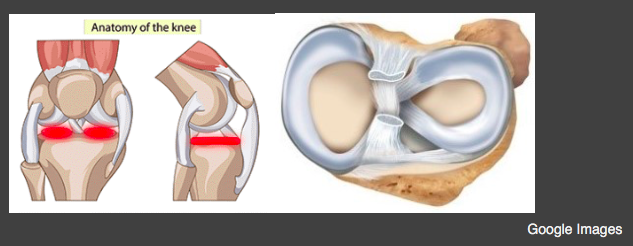
A meniscus injury, what is it and how can you manage it?
In the podiatry corner of the NK Active September newsletter, one of our Podiatrist’s Charlotte spoke about meniscus injuries; one of the most common kinds of knee injuries. The meniscus is a C-shaped cartilage that is located between your thigh bone and shinbone; they are tough and rubbery and provide cushioning to the joint which keeps it stable and allows the movement of your knee to be smooth.

Meniscus injuries can tear in different ways.
The way that they are torn is determined by how they look, as well as where the tear occurs in the meniscus. The most common meniscal tears include bucket handle, flap, and radial tear.
With a sports-related meniscal tear, often other knee injuries occur or damage to the anterior cruciate ligament.
Why does it happen?
Meniscus tears can happen during activities that cause direct contact or pressure from a forced twist or rotation. They can also be caused by a sudden turn or pivot, deep squatting, heavy lifting or even kneeling.
The meniscus does also weaken with age and simple movements like stepping can lead to injury. As we get older, the meniscus can also become weaker and thinner so some injuries can be linked to more of a degenerative tear (basically wear and tear!).
What are the common symptoms associated with this condition?
- Pain, especially when the area is touched
- Stiffness and swelling
- A catching or locking sensation of the knee
- The feeling that your knee is giving way or unable to support you
- Reduced range of motion in bending and straightening the leg
How is this condition diagnosed?
A health professional will review your medical history and symptoms. A physical examination of the knee will be conducted, including palpation around the joint line, range of motion and more specific tests which can indicate that the meniscus is damaged.
The three most common tests are the McMurray’s, Apley’s grind and Thessaly’s test.
Imaging can also be another way of diagnosis. The most common method is MRI, which will allow pictures to be taken of the cartilage to determine if there is a meniscus tear; however, most meniscus tears can be solely diagnosed by physical examination.
What can I do?
For short term management resting can be effective, along with ice if you have swelling present.
Meniscus tears are usually treated with conservative measures first, but this can depend on the type of tear that you have. For most tears simple exercises can help to maintain muscle strength, reduce pain, and increase your knee stability and mobility.
Muscle groups to focus on strengthening include:
- Quadriceps
- Hamstrings
- Calves
- Hips
Activity modification is also another way of managing your symptoms.
Conservative methods are usually tried for at least three to six months, then after this time if these measures are ineffective and your symptoms persist, treatment may include surgery to help repair or remove the damaged cartilage.
Check out our YouTube channel for strengthening circuits and examples of exercises to strengthen certain muscles groups in the body.
